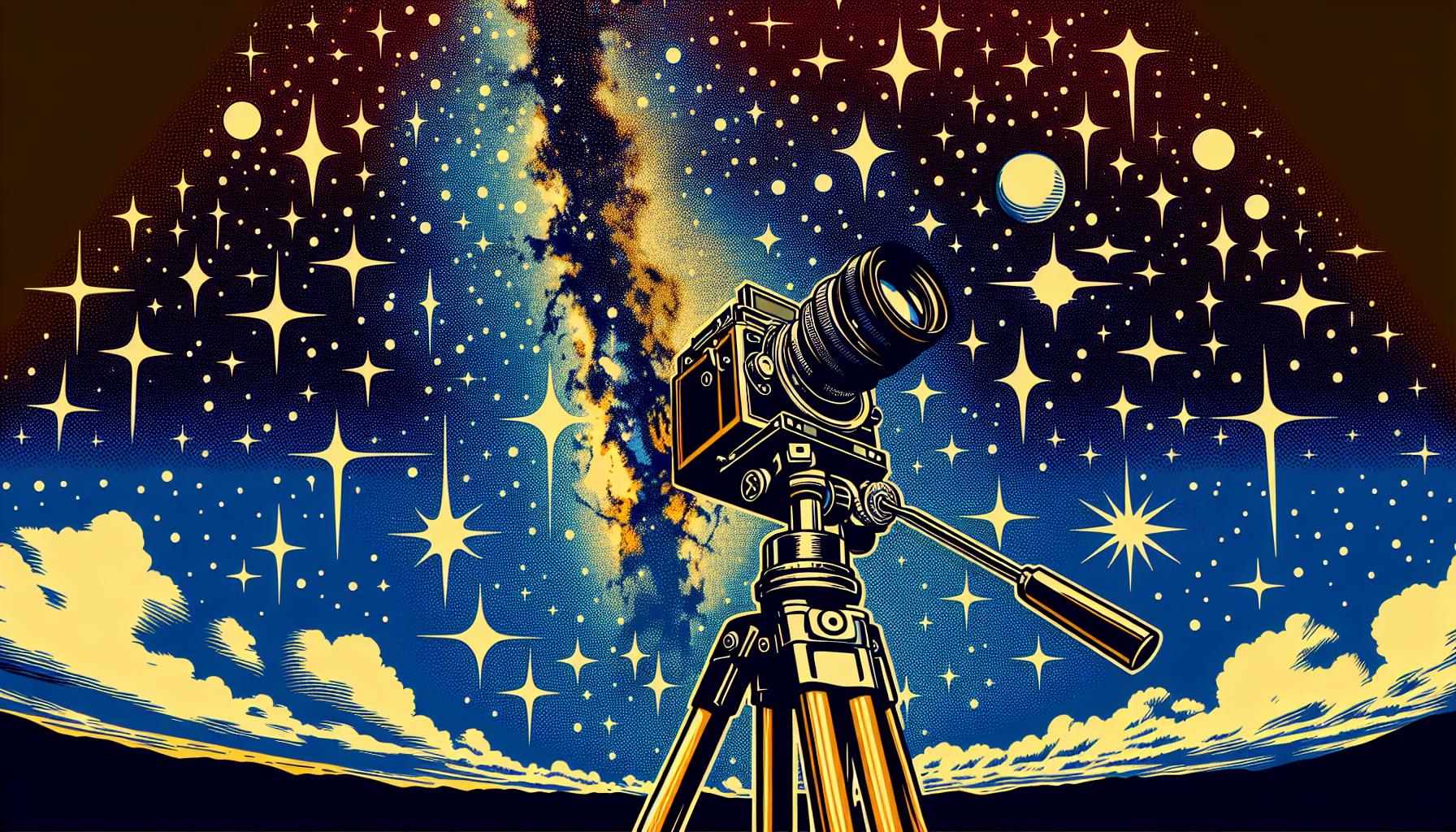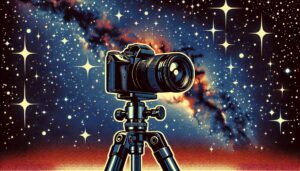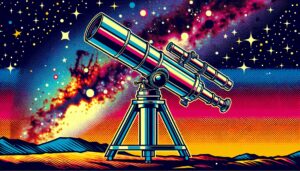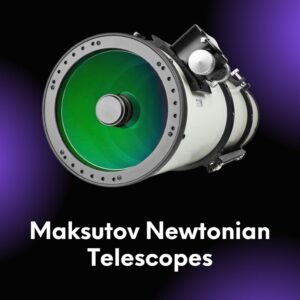This site contains affiliate links to products. I may receive a commission for purchases made through these links.
Ever gazed up at the night sky and wished you could capture its beauty? You’re not alone. I’ve been there too. Embarking on the journey of astrophotography can be thrilling, yet daunting. Trust me, it’s not as intimidating as it seems, especially when you’re armed with the right gear.
Starting out in astrophotography doesn’t require a bank-breaking investment. You’d be surprised at how much you can achieve with basic equipment. Let’s talk about the essentials, the equipment that’ll transform your stargazing into star-capturing.
From choosing the right telescope to understanding the role of a good camera, I’ll guide you through the maze of beginner astrophotography equipment. So, buckle up and get ready to turn your astronomical dreams into a reality.
Choosing the Right Telescope
When it comes to astrophotography, the selection of the right telescope can make a significant difference. It’s the backbone of your setup and will be the primary tool for capturing the celestial wonders.
Don’t let the wide variety of telescopes intimidate you. I’ll guide you through the basics of picking the right one for your specific needs. Here’s what you need to focus on:
Aperture
The aperture of a telescope is the diameter of its main optical component, and it directly affects the quality of your images. Larger apertures capture more light, providing clearer, brighter images. But they’re also larger, heavier, and typically more expensive. For beginners, I’d recommend an aperture of 4 to 8 inches – it’s a balance of cost, size, and image quality.
Resolution
Resolution describes how much detail a telescope can reveal. Higher resolution means you can see finer details, but it’s also affected by atmospheric conditions. For beginners, a resolution of 1 arcsecond is suitable and can provide plenty of detail in most viewing conditions.
Focal Length
The focal length of a telescope is another important factor. It affects the size of the image and field of view. Telescopes with shorter focal lengths will produce wider fields of view, ideal for capturing large objects like nebulae. On the other hand, telescopes with longer focal lengths are best for observing smaller, more distant objects.
Telescope Type
There are three main types of telescopes – Refractor, Newtonian, and Schmidt-Cassegrain. Each has its strengths and weaknesses. For instance, refractor telescopes are low-maintenance, produce clear images and are great for viewing planets. Newtonian telescopes, however, offer large apertures at a lower cost and are excellent for deep-sky viewing. Finally, Schmidt-Cassegrain telescopes are versatile, compact, and suitable for both planetary and deep-sky objects.
Remember, each person’s astrophotography journey is unique. Consider your budget, your observing interests and how portable you need your equipment to be. Don’t rush into buying the most expensive gear. The right telescope for you aligns with your needs and wants in this wonderful hobby of astrophotography.
Understanding the Role of a Good Camera
Just as choosing the right telescope is crucial, selecting a suitable camera also plays a vital role in your astrophotography journey. Your camera is an indispensable companion to your telescope. It’s the tool that captures the wonderous, far-reaching universes that your telescope brings within sight. Thus, understanding its features and how they impact your astrophotography results can make all the difference in the world.
Digital Single Lens Reflex (DSLR) cameras are a popular choice among beginners and experienced astrophotographers alike, due to their versatility and impressive features. These cameras have removable lenses, allowing you to use a variety of lenses with different focal lengths, apertures, and features. This allows you to customize your kit to meet the specific needs of your astrophotography ventures.
The crucial camera specifications you’ll need to consider include sensor size, resolution, and sensitivity to light. Sensor size plays a pivotal role because a larger sensor can gather more light, offering better image quality. Larger sensors do tend to be more expensive, but they’re well worth the investment for serious astrophotographers.
The camera’s resolution, measured in megapixels, impacts the level of detail you can capture in your astrophotography. While a higher resolution is generally better, it’s essential to balance this with the camera’s noise levels at high ISO settings, which is where the sensitivity to light comes into play.
Last but certainly not least, functionality in low-light conditions is crucial. Our celestial subjects are best viewed at night, which means your camera must be able to handle these lighting conditions. Look for a camera that performs well at high ISO levels, as this often translates to better performance in low light.
Remember, there isn’t a “best” camera for everyone. Just as with telescopes, the best camera for you will be the one that suits your individual needs, preferences, and budget. Your goal is to find a camera that complements your telescope and enhances your ability to capture awe-inspiring shots of the cosmos.
Essential Camera Accessories for Astrophotography
Once you’ve picked your DSLR camera, don’t get too comfortable yet – it’s necessary to arm yourself with the proper accessories for a successful stargazing photography session. Remember, astrophotography isn’t just about the camera or the telescope, it’s about the whole picture (pun intended)!
A sturdy tripod is an absolute must to ensure stableness. You’ll literally be shooting in the dark and the smallest movement can blur your images, ruining hours of work.
Should you venture into deeper astrophotography realm, consider an equatorial mount. This device compensates for Earth’s rotation by moving to match the stars’ apparent motion. Expensive, yes; worth it, undoubtedly.
A remote shutter release would be high on my list of essentials, too. These devices allow you to take shots without physically touching the camera, reducing the risk of image blur.
Another worthy investment is a star tracker. A star tracker slowly moves your camera to follow the stars as they journey across the night sky, providing clear and sharp astro-images.
When you’re taking long exposures in chilly evening conditions, camera lens fogging can be a problem. A dew heater attached to your lens can help prevent the cold air’s condensation on your equipment.
Last on this list but equally important – spare battery packs. Astrophotography is a time-consuming process. Trust me, there’s nothing more frustrating than running out of power halfway through the perfect night sky shoot.
Don’t forget, all these accessories are tools that assist in capturing the breathtaking spectacle of the night sky. They’re not mandatory but certainly helpful. The priority always remains to get the camera that works best for you and then consider these add-ons.
Items such as tripods, remote shutter releases, star trackers, dew heaters, and spare battery packs though not essential can really enhance your astrophotography experience. They enable stability, reduce the chance of image blur, and ensure you’re not left in the dark halfway through a shoot. Accessories are much like best supporting actors to your camera, serving their part to create your picture-perfect frame.
Tripods and Mounts: Stabilizing Your Equipment
Sturdiness in the world of astrophotography can’t be overstated. Tripods form the backbone of your setup. They’re the unsung heroes that provide your camera the much-needed stability. It’s crucial to invest in a high-quality, robust tripod, made of durable materials like aluminium or carbon fiber, to withstand the weight of your equipment and the elements.
Equally important is a tripod’s head—the connection point between your camera and the tripod. The best choice is a ball head, known for its quick adjustments and great flexibility. They’re perfect for ensuring that your camera is lined up perfectly with your celestial subject.
Beyond a great tripod, for those looking to take their astrophotography to the next level, an equatorial mount is worth considering. This mount rotates in alignment with Earth’s rotation. It counteracts the movement of stars, keeping your shots blur-free, allowing you to capture long-exposure photographs of the galaxy without star trails.
To get the most out of your tripod and equatorial mount, it’s important to remember a few key points. Always place your tripod on a firm, level surface to ensure optimum stability. With equatorial mounts, you’ll need to know how to correctly align them with the North or South Pole—this might take a bit of practice but it’ll be a game-changer for your photos.
But there’s always more to explore and learn in the world of astrophotography equipment. With the right tools and a little bit of patience, you’re setting yourself up for an amazing journey filled with star-studded skies.
Conclusion
So there you have it. We’ve delved into the world of beginner astrophotography equipment and I hope you’ve found the journey enlightening. Remember, a sturdy tripod and ball head are your best friends for stability and alignment. Don’t overlook the role of an equatorial mount – it’s a game-changer in preventing star trail blur.
But it’s not just about having the gear, it’s about using it effectively. So, get out there, experiment with your new tools and embrace the learning curve. The night sky awaits and it’s full of wonders waiting to be captured by your lens. Here’s to clear skies and rewarding experiences in your astrophotography endeavors.
Frequently Asked Questions
What are some essential camera accessories for astrophotography?
The essentials include a sturdy tripod and a ball head which provide stability and alignment. An equatorial mount is recommended for its ability to counteract the movement of stars and prevent image blur.
Why is a sturdy tripod important for astrophotography?
A sturdy tripod is important for astrophotography because it provides the required stability. It helps to keep the camera in place and avoids blur due to any unwanted minor movements.
How does a ball head contribute to astrophotography?
A ball head plays a pivotal role in astrophotography by providing precise alignment. It allows the camera to be positioned in multiple angles, offering an unwavering viewpoint of the sky.
What is the function of the equatorial mount in astrophotography?
An equatorial mount is especially useful in astrophotography as it helps counteract the movement of stars. This prevents image blur, and aids in capturing clear, vivid pictures of the night sky.




